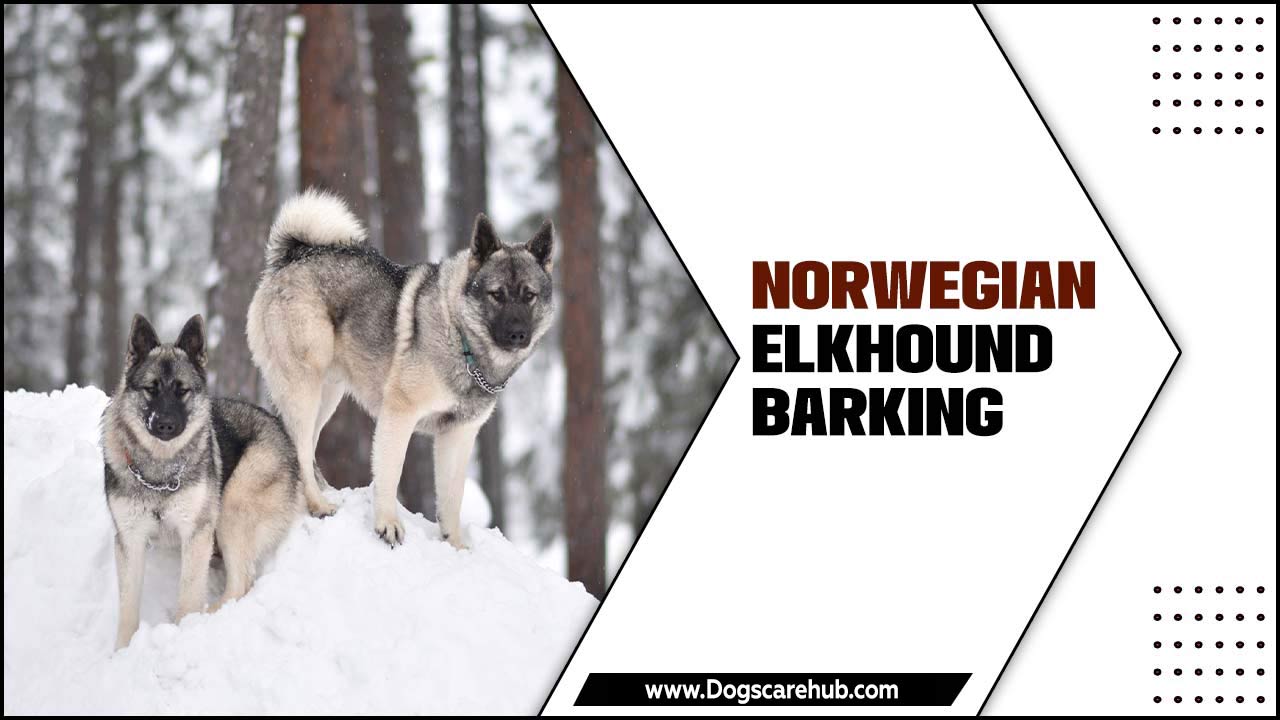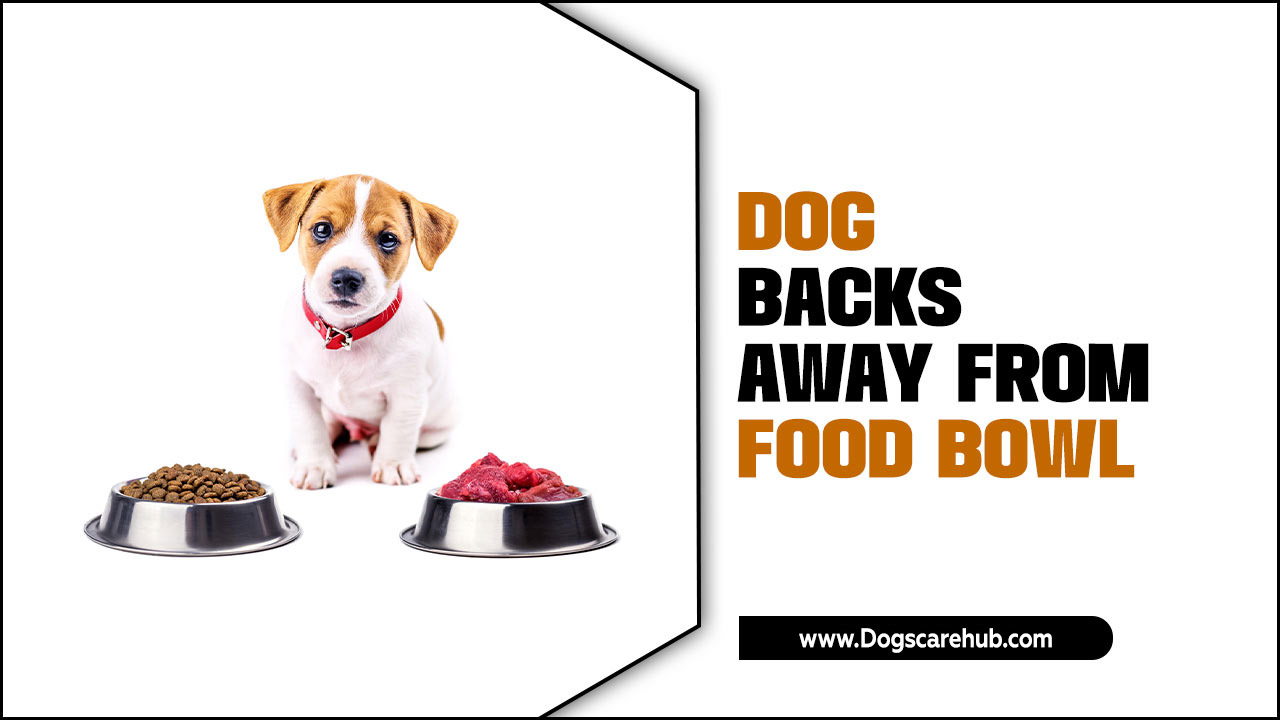Quick Summary:
Understanding dog behavioral changes is key for beginners. Watch for shifts in energy, appetite, social interaction, and potty habits. These subtle (or not-so-subtle) signs can indicate happiness, stress, illness, or a need for training adjustments. This guide helps you interpret these changes confidently, ensuring your furry friend stays healthy and happy.
Welcome to dogscarehub! Owning a dog is an incredible journey, filled with wagging tails and wet-nosed greetings. Sometimes, our furry companions start acting a little… different. Maybe they’re suddenly shy around familiar people, or their once-reliable potty training seems to have gone by the wayside. It’s completely normal for dog owners, especially beginners, to wonder what these shifts in behavior mean. These changes can seem confusing or even worrying, but they’re often your dog’s way of communicating something important. This guide is here to help you understand those signals, from noticing the subtle shifts to figuring out what might be going on. We’ll walk through common behavioral changes, why they happen, and what you can do to help your dog feel their best. Let’s dive in and become super sleuths for our pups!
Understanding Your Dog’s Baseline Behavior
Before you can spot a change, you need to know what’s normal for your dog. Every dog is an individual, with their own personality, energy levels, and quirks. What’s perfectly fine for a bouncy Labrador might be unusual for a laid-back Basset Hound. Taking the time to really understand your dog’s typical behavior is the first, and most crucial, step in recognizing when something is different.
What is “Normal” for Your Dog?
Think about your dog’s everyday routine and personality:
- Energy Levels: Are they usually a couch potato or a furry tornado? Do they normally greet you with boundless enthusiasm or a calm tail wag?
- Appetite and Digestion: Do they gobble their food, or are they a nibbler? Are their stools consistently firm and normal?
- Social Interactions: How do they behave around you, other family members, strangers, and other dogs? Are they generally friendly, aloof, or cautious?
- Sleeping Habits: Do they have a favorite spot? Are they a deep sleeper or easily disturbed?
- Vocalization: Do they bark often, or are they usually quiet? What do their barks sound like (playful, warning, anxious)?
- Play Style: What toys do they love? How do they engage in play with you or other dogs?
- Grooming Habits: Do they enjoy being brushed, or do they tolerate it?
- Potty Habits: Are they reliably house-trained? Do they have a specific routine for going outside?
Keeping a Behavior Journal
If you’re new to dog ownership or just want to be more observant, keeping a simple journal can be incredibly helpful. Jot down notes about:
- Date and time
- What was happening before the behavior
- The specific behavior observed
- Your dog’s general demeanor (happy, anxious, lethargic, etc.)
- Any other notable observations
This practice will help you identify patterns and notice subtle shifts that you might otherwise overlook. It’s excellent for tracking progress during training or for noting any concerning changes that might warrant a vet visit.
Common Dog Behavioral Changes and What They Might Mean
Dogs communicate through their actions. Changes in their behavior are their way of telling us something isn’t quite right, or perhaps that something wonderful is happening! Let’s explore some of the most frequent changes you might observe and what they could signify.
1. Changes in Energy Levels
This is often one of the first things owners notice. A sudden increase or decrease in your dog’s typical energy can be telling.
- Increased Restlessness, Pacing, or Destructive Behavior: This could point to anxiety, boredom, or a lack of sufficient physical and mental stimulation. Your dog might need more exercise, new toys, or training to engage their mind. It can also be a sign of discomfort or pain if it’s a sudden shift.
- Lethargy or Unwillingness to Play: A dog that’s usually energetic but suddenly seems tired, sluggish, or uninterested in their favorite activities might be unwell. This is a common sign that something is physically wrong. Illness, injury, or even stress can cause a dog to withdraw and conserve energy.
2. Altered Appetite or Thirst
Fido’s food bowl and water dish can be indicators of his well-being.
- Decreased Appetite or Refusal to Eat: This is a significant signal. It can range from mild pickiness to a complete refusal to eat. Reasons can include stress, dental pain, gastrointestinal upset, or more serious underlying health conditions.
- Increased Appetite: While some medical conditions can cause increased hunger (like diabetes or Cushing’s disease), it can also sometimes be a sign of stress or boredom. If you notice a dramatic jump in your dog’s desire for food, it’s worth investigating.
- Drinking More or Less Water: A sudden, significant change in water consumption is often a signpost for health issues like kidney disease, diabetes, or infections. It’s important to monitor this closely.
3. Changes in Social Behavior
How your dog interacts with you and others is a window into their emotional state.
- Increased Clinginess or Seeking Attention: This can stem from anxiety (separation anxiety, general fearfulness), a need for reassurance, or sometimes, simply seeking comfort if they aren’t feeling well.
- Withdrawal or Hiding: If your dog starts to hide from family members, avoid eye contact, or seem generally less interactive, it could be a sign of fear, pain, or illness. They might be trying to remove themselves from a situation that makes them uncomfortable.
- Increased Aggression or Irritability: A dog that suddenly snaps, growls, or shows aggression towards people or other animals may be experiencing pain, fear, or a significant stressor. This is a behavior that requires immediate attention and professional guidance.
- Becoming More or Less Playful with Other Dogs: A change in how they interact with canine companions can signal social stress, over-excitement, or a shift in their physical comfort.
4. Potty Training Regressions
Accidents can happen, but a consistent pattern of house-soiling is a behavioral change to address.
- Urinating or Defecating Indoors: This is a common concern. Potential causes include stress (new environment, changes in routine, loud noises), medical issues (urinary tract infections, kidney problems, cognitive dysfunction in older dogs), or inadequate training. For older dogs, this could be a sign of a cognitive decline, similar to dementia in humans. You can learn more about age-related changes from resources like the American Veterinary Medical Association (AVMA).
- Changes in Urination or Defecation Habits: Even if accidents aren’t happening inside, changes like increased frequency, straining, or finding blood might indicate a medical issue.
5. Changes in Sleep Patterns
Your dog’s slumber habits can also offer clues.
- Sleeping More Than Usual: As mentioned with lethargy, this can be a sign of illness or simply the natural slowdown that comes with age.
- Restlessness at Night or Difficulty Settling: This can be linked to anxiety, discomfort from pain, or changes in their environment that are keeping them awake.
6. Excessive Licking, Chewing, or Grooming
While some grooming is normal, obsessive behavior can signal distress.
- Licking Paws or Body Excessively: This often points to localized pain, allergies, skin irritation, or anxiety. If they lick one spot repeatedly, it can even lead to a condition called a lick granuloma.
- Chewing on Objects or Themselves: Destructive chewing in adult dogs, when not related to teething, can be a sign of boredom, anxiety, or stress.
Why Do Behavioral Changes Happen?
It’s important to remember that behavioral changes are rarely random. They are almost always a response to something happening in your dog’s life, whether it’s internal or external. Understanding the root cause is key to providing the right solution.
1. Medical Issues and Pain
This is the most critical area to rule out first, especially for sudden behavioral shifts. Pain is a major driver of altered behavior. A dog in pain might:
- Become irritable or aggressive when touched.
- Become more withdrawn or seek solitude.
- Limp or show stiffness (which is a behavioral change in movement).
- Have a reduced appetite.
- Sleep more.
Conditions like arthritis, dental disease, ear infections, digestive issues, or even internal organ problems can all manifest as behavioral changes. Always consult your veterinarian to rule out any underlying medical concerns.
2. Environmental Changes and Stressors
Dogs are sensitive creatures, and changes to their environment can be unsettling.
- New Home: Moving is a huge upheaval for a dog, impacting their sense of security.
- New Family Members: A new baby, a new partner, or even a visiting relative can disrupt routines and cause stress.
- New Pets: Introducing a new animal to the household requires careful management and can be a source of tension or changes in existing pet dynamics.
- Loud Noises: Fireworks, thunderstorms, or construction can trigger significant anxiety.
- Changes in Routine: A shift in your work schedule, less time spent at home, or changes in feeding times can all affect a dog’s sense of stability.
3. Lack of Stimulation (Boredom)
Dogs, especially intelligent and active breeds, need mental and physical engagement. When these needs aren’t met, they can resort to undesirable behaviors.
- Destructive Chewing: To entertain themselves.
- Excessive Barking: To get attention or out of frustration.
- Digging: As a way to explore or escape boredom.
- Pacing: A sign of an anxious, under-stimulated dog.
Providing puzzle toys, interactive games, and sufficient daily exercise can make a huge difference. The American Society for the Prevention of Cruelty to Animals (ASPCA) offers great advice on managing boredom.
4. Age-Related Changes
Just like humans, dogs go through changes as they age.
- Puppies: Exhibit behaviors related to learning, exploring, and teething.
- Adolescent Dogs (approx. 6-18 months): Can experience a “teenage” phase where they test boundaries, become more independent, or seem to forget their training. This is a normal developmental stage.
- Senior Dogs: May develop cognitive dysfunction (similar to dementia), leading to confusion, changes in sleep, and house-soiling accidents. Arthritis can cause pain, leading to reluctance to move or play.
5. Fear and Anxiety
Fear is a natural emotion, but when it becomes pervasive, it drives many behavioral issues.
- Traumatic Experiences: A negative encounter with a person, animal, or situation can create lasting fear.
- Genetics: Some dogs are naturally more predisposed to fearfulness.
- Lack of Socialization: Puppies who don’t have positive exposure to various sights, sounds, people, and other animals during their critical socialization window (typically up to 16 weeks) can develop fears later in life. Resources like The Farmer’s Dog provide insights into this critical period.
How to Address Common Behavioral Changes
Once you’ve identified a change and considered potential causes, it’s time to figure out how to help your dog. Here’s a breakdown of general strategies.
When to See Your Veterinarian
This is non-negotiable for any sudden or significant behavioral change, especially if accompanied by physical symptoms (vomiting, diarrhea, lethargy, loss of appetite, limping, etc.). Your vet will perform a thorough physical exam and may recommend diagnostic tests to rule out or identify medical issues. Never assume a behavioral change is “just behavioral”; it could be a sign of pain or illness that needs professional treatment.
Use this table to decide when to prioritize a vet visit:
| Behavioral Change | Likely Medical Cause? | Action |
|---|---|---|
| Sudden loss of appetite or extreme lethargy | High | Contact vet immediately. |
| Potty accidents (especially sudden changes or increased frequency) | Moderate to High | Consult vet to rule out UTIs, kidney issues, etc. |
| Increased aggression or irritability | Moderate to High | Rule out pain or fear-based medical conditions with vet. |
| Excessive drinking or urination | High | Vet check for diabetes, kidney disease. |
| Constant restlessness or inability to settle, especially in older dogs | Moderate | Discuss with vet for pain, cognitive decline, or anxiety. |
| Sudden, drastic changes in personality | High | Immediate vet consultation recommended. |
| Limping or reluctance to move | High | Vet exam for injury or arthritis. |
Effective Strategies for Behavioral Management
Once medical causes are ruled out, you can focus on other management strategies:
1. Increase Physical and Mental Exercise
A tired dog is often a well-behaved dog. Ensure your dog is getting enough age-appropriate exercise daily. This doesn’t just mean a quick walk around the block.
- Longer Walks: Explore different routes to provide new sights and smells.
- Fetch or Play Sessions: Engage in active play in a safe area.
- Agility or Nose Work: Consider structured activities that challenge them mentally and physically.
- Puzzle Feeders: Make mealtime an enriching experience by using treat balls or slow feeders.
- Training Sessions: Short, consistent training sessions using positive reinforcement can be highly mentally stimulating.
2. Positive Reinforcement Training
Positive reinforcement focuses on rewarding desired behaviors, making them more likely to occur again. This builds a strong bond between you and your dog.
- Reward Calmness: When your dog is relaxed, give them praise or a small treat.
- Reward Desired Behaviors: If they’re sitting calmly instead of barking at the door, reward them.
- Use High-Value Treats: For particularly challenging behaviors or training goals, use treats your dog absolutely loves (e.g., small pieces of chicken, cheese, or special training treats).
- Consistency is Key: Ensure all family members are using the same commands and reward systems.
For more in-depth training advice, consider reputable sources like the Certification Council for Professional Dog Trainers (CCPDT).
3. Environmental Enrichment
Make your dog’s living space more interesting and less stressful.
- Safe Spaces: Provide a comfortable bed or crate where they can retreat and feel secure.
- Rotating Toys: Keep toys fresh and exciting by rotating them regularly.
- Interactive Toys: Use food-dispensing toys and treat puzzles to keep them occupied when you can’t directly supervise.
- Calming Music or Scents: For anxious dogs, calming music or pheromone diffusers can sometimes help.
4. Managing Fear and Anxiety
Addressing fear and anxiety often requires a multi-faceted approach.
- Identify Triggers: What specific things cause your dog to become fearful or anxious?
- Desensitization and Counter-Conditioning: This involves gradually exposing your dog to their fear trigger at a low intensity while pairing it with positive experiences (like treats or praise). This should be done carefully and often with professional guidance.
- Avoid Forcing Interactions: Never force your dog into a situation that scares them. This can worsen their fear.
- Professional Help: For severe anxiety or fear-based aggression, consult a certified professional dog trainer or a veterinary behaviorist.
5. Establishing a Routine
Dogs thrive on predictability. A consistent daily schedule can significantly reduce stress and anxiety.
- Regular Feeding Times: Feed your dog at the same time(s) each day.
- Consistent Potty Breaks: Take them out at predictable intervals.
- Scheduled Exercise: Incorporate walks and playtime into the daily routine.
- Bedtime Routine: A predictable end to the day can help both of you relax.
Signs Your Dog is Happy and Content
It’s not all about fixing problems! Recognizing your dog’s positive behaviors is just as important. A happy dog often displays:
- A relaxed body: Loose, wiggly posture, soft eyes, and a relaxed jaw.
- A “happy” tail wag: Often described as a wag that’s broad and moves the whole rear end.
- Play bows: A play invitation when their chest is on the ground, but their rear end is up.
- Seeking interaction: Coming to you for pets, nudging your hand, or bringing you toys.
- A healthy appetite and good digestion.
- Sleeping soundly and comfortably.
- Enthusiasm for walks, play, and training.
FAQ: Your Beginner Questions Answered
Q1: My puppy is suddenly chewing everything, even after teething stopped. What’s going on?
A1: While teething can cause chewing, adult dogs chew for various reasons, including boredom, anxiety, or a lack of sufficient mental and physical stimulation. Ensure your puppy has plenty of appropriate chew toys and engage them in regular training and play sessions.
Q2: My dog used to love meeting new people, but now they hide when guests arrive. Why the change?
A2: This could be due to a negative past experience, fear, or simply aging. Observe if anything specific triggered this change. It’s important to not force your dog to interact with guests; allow them to approach when they feel comfortable. Providing a safe space for them to retreat can also help.
Q3: My senior dog is having accidents in the house. Are they just being naughty?
A3: It’s unlikely your senior dog is being naughty. House-soiling in older dogs can be a sign of underlying medical issues (like UTIs or kidney problems) or cognitive decline (like doggy dementia). It’s crucial to take them to the veterinarian for a thorough check-up to determine the cause and appropriate treatment.
Q4: I’ve noticed my dog seems more clingy than usual. Should I be worried?
A4: Increased clinginess can be a sign of anxiety or a need for reassurance. It might be triggered by changes in your routine, new stressors, or even if your dog isn’t feeling well. Try to identify any recent changes and offer calm, consistent reassurance. If it persists or is accompanied by other concerning behaviors, consult your vet.
Q5: My dog is usually very food-motivated, but they’ve started leaving food in their bowl. Is this serious?
A5: A sudden decrease in appetite is a common signal that something is not right. It could be anything from mild stress to a more serious health concern like dental pain, gastrointestinal upset, or other illnesses. It’s best to schedule a visit with your veterinarian to get it checked out.
Q6: My dog is acting more hyper and destructive than usual. We already walk them daily!
A6: While daily walks are great, sometimes dogs need more than just physical exercise. Mental stimulation is crucial! Try incorporating puzzle toys, training games, or short bursts of intense play. Ensure the walk is also engaging for them, allowing them to sniff and explore.
Conclusion
Navigating dog behavioral changes can feel like a puzzle, but by understanding your dog’s baseline, looking for common signs, and knowing when to seek professional advice, you’re well on your way to a happier, healthier partnership. Remember, your dog’s behavior is their communication. By being an attentive and compassionate observer, you can decode their messages, identify potential issues early, and provide the support they need. Whether it’s a sudden change in appetite or a regression in house-training, approaching these situations with patience, love, and a willingness to learn will strengthen your bond and ensure a fulfilling life together. Keep observing, keep learning, and most importantly, keep enjoying your wonderful canine companion!
Meet Elyse Colburn, the devoted canine companion and storyteller behind the enchanting world of “Tales, Tails, and Adventures Unleashed.” A passionate dog enthusiast with a heart full of paw prints, Elyse Colburn shares heartwarming tales and insightful adventures, celebrating the joy, loyalty, and endless antics that make every dog a true hero. Join Elyse Colburn on this tail-wagging journey, where every post is a love letter to our four-legged friends.







